(FORMYLMETHYL)TRIPHENYLPHOSPHONIUM CHLORIDE
Synonym(s):2-Oxoethyltriphenylphosphonium chloride
- CAS NO.:62942-43-2
- Empirical Formula: C20H18ClOP
- Molecular Weight: 340.79
- MDL number: MFCD00012003
- EINECS: 263-767-2
- SAFETY DATA SHEET (SDS)
- Update Date: 2025-07-14 15:27:00
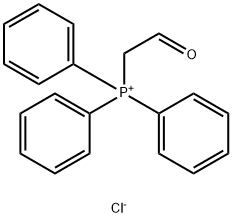
What is (FORMYLMETHYL)TRIPHENYLPHOSPHONIUM CHLORIDE?
Chemical properties
YELLOW POWDER
The Uses of (FORMYLMETHYL)TRIPHENYLPHOSPHONIUM CHLORIDE
(Formylmethyl)triphenylphosphonium Chloride is a useful Wittig reagent. Used as a reactant for Hydroazidation reactions in preparation of a-azido alcohols, Preparation of prodrug (2-hydroxyamino-vinyl)-triphenyl-phosphonium (HVTP) inhibitor of peroxidase activity and apoptosis and Intramolecular [4 + 3] cycloaddition reactions.
The Uses of (FORMYLMETHYL)TRIPHENYLPHOSPHONIUM CHLORIDE
Reactant for:• ;Hydroazidation reactions in preparation of a-azido alcohols1• ;Preparation of prodrug (2-hydroxyamino-vinyl)-triphenyl-phosphonium (HVTP) inhibitor of peroxidase activity and apoptosis2• ;Intramolecular [4 + 3] cycloaddition reactions3
Properties of (FORMYLMETHYL)TRIPHENYLPHOSPHONIUM CHLORIDE
| Melting point: | 209-212 °C (dec.) (lit.) |
| storage temp. | 2-8°C |
| form | solid |
| color | Light yellow to Yellow to Orange |
| Water Solubility | Soluble in water. |
| Sensitive | Hygroscopic |
| BRN | 4060813 |
| CAS DataBase Reference | 62942-43-2(CAS DataBase Reference) |
Safety information for (FORMYLMETHYL)TRIPHENYLPHOSPHONIUM CHLORIDE
| Signal word | Danger |
| Pictogram(s) |
 Corrosion Corrosives GHS05  Exclamation Mark Irritant GHS07 |
| GHS Hazard Statements |
H302:Acute toxicity,oral H318:Serious eye damage/eye irritation |
| Precautionary Statement Codes |
P264:Wash hands thoroughly after handling. P264:Wash skin thouroughly after handling. P270:Do not eat, drink or smoke when using this product. P280:Wear protective gloves/protective clothing/eye protection/face protection. P301+P312:IF SWALLOWED: call a POISON CENTER or doctor/physician IF you feel unwell. P305+P351+P338:IF IN EYES: Rinse cautiously with water for several minutes. Remove contact lenses, if present and easy to do. Continuerinsing. P501:Dispose of contents/container to..… |
Computed Descriptors for (FORMYLMETHYL)TRIPHENYLPHOSPHONIUM CHLORIDE
| InChIKey | RVEJRPJGKXTQIF-UHFFFAOYSA-M |
New Products
Indole Methyl Resin tert-butyl 9-methoxy-3-azaspiro[5.5]undecane-3-carboxylate Boc-His(Boc)-OH 2-CTC Resin 4-Chloro-7-tosy1-7Hpyrrolo[2,3-d]pyrimidine 5,7-Dibromo-1H-indole 2,5-dichloro-N-hydroxy-4,6-dimethylpyridine-3-carboximidamide 2,2-Dimethoxy-7-azaspiro[3.5]nonane hydrochloride 4-chloromethyl-5-methyl-1,3-dioxol-2-one (DMDO-Cl) R-2-BENZYLOXY PROPIONIC ACID 1,1’-CARBONYLDIIMIDAZOLE 1,1’-CARBONYLDI (1,2-4 TRIAZOLE) N-METHYL INDAZOLE-3-CARBOXYLIC ACID 4-((2-hydroxyethyl)thio)benzoic acid 1-(TERT-BUTOXYCARBONYL)-2-PYRROLIDINONE Methyl 6-methylnicotinate 3-Pyridineacrylic acid tert-Butyl carbazate TETRAHYDRO-2H-PYRAN-3-OL 2-((4-morpholinophenylamino) (methylthio) methylene) malononitrile 3-(4-morpholinophenylamino)-5-amino-1H-pyrazole-4-carbonitrile 2,4-dihydroxybenzaldehyde 1,3-Diethyl-1,3-Diphenylurea Methyl 2-methylquinoline-6-carboxylateRelated products of tetrahydrofuran


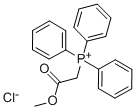
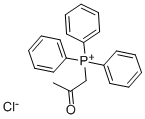


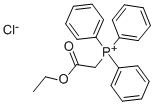
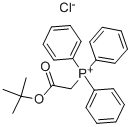
You may like
-
 (Formylmethyl)triphenylphosphonium Chloride CAS 62942-43-2View Details
(Formylmethyl)triphenylphosphonium Chloride CAS 62942-43-2View Details
62942-43-2 -
 (Formylmethyl)triphenylphosphonium chloride CAS 62942-43-2View Details
(Formylmethyl)triphenylphosphonium chloride CAS 62942-43-2View Details
62942-43-2 -
 Pyridine 99.5% HPLC /UV SpectroscopyView Details
Pyridine 99.5% HPLC /UV SpectroscopyView Details
110-86-1 -
 Piperazine Spot supply, best priceView Details
Piperazine Spot supply, best priceView Details
110-85-0 -
 Dibutyl PhthalateView Details
Dibutyl PhthalateView Details
84-74-2 -
 Imidazole Spot supply, competitive priceView Details
Imidazole Spot supply, competitive priceView Details
288-32-4 -
 Octadecyl 3-(3,5-di-tert-butyl-4-hydroxyphenyl)propionate 98% (GC)View Details
Octadecyl 3-(3,5-di-tert-butyl-4-hydroxyphenyl)propionate 98% (GC)View Details
2082-79-3 -
 Thiourea 99% ARView Details
Thiourea 99% ARView Details
62-56-6
Statement: All products displayed on this website are only used for non medical purposes such as industrial applications or scientific research, and cannot be used for clinical diagnosis or treatment of humans or animals. They are not medicinal or edible.
